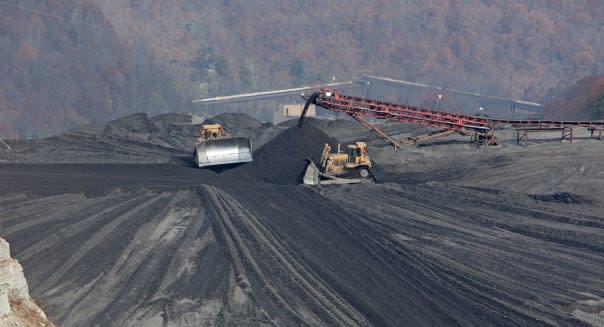Why the Death of Coal in America Is Saving You Money

Coal is dying as a source of energy in the U.S. as increased regulation and competing energy sources push it out of the market. The headlines might make you think that coal's decline will lead to higher energy bills or less energy security, but that's simply not the case.
As coal plants and coal mines are shut down around the country, the cost of electricity hasn't been as impacted as you might think. In fact, energy costs are now growing more slowly than they were when coal was the leading source of energy in the U.S. To understand why, you have to look at how quickly competing sources of energy are lowering their own costs.
The Decline of Coal
There's a lot of debate about what's actually driving the decline of coal in the electricity industry, but there's no denying that coal's best days are in the past. Over 150 coal power plants have been closed this century, and the trend shows no sign of slowing.
According to the U.S. Energy Information Administration, the use of coal in electricity generation is down more than 20 percent just since the beginning of 2008.

While coal generation has declined, you might think that energy costs would have spiked as a result. But the impact of plant closures has actually been to slow electricity cost growth.
The Surprising Impact on Electricity Prices
Electricity costs go up nearly every year because utilities need to make investments in maintaining the grid to serve customers, and those costs rise with inflation. So, it's no surprise that electricity rates have gone up over the past decade on a regular basis.
What is surprising is that the rate at which electricity prices have increased has actually slowed at the same time as coal plants are being shut down. Between 2001 and 2008, when coal usage was still growing, the price of electricity increased 4.2 percent a year in the U.S. In the six years since, electricity prices have increased just 1.2 percent a year.

That's partly due to the falling cost of natural gas and partly because wind and solar energy are now lower-cost than coal or natural gas. Investment bank Lazard issues ban annual report called Lazard's Levelized Cost of Energy Analysis that analyzes the cost to build new power plants, and coal at 6.6-15.1 cents per kWh is now more expensive than wind at 1.4-6.7 cents per kWh and even utility solar at 5.6-8.6 cents per kWh.
Regulations that make pollution from coal more expensive might be putting coal at a disadvantage, but alternatives to coal are winning on more than the pollution front. According to Lazard, wind and solar are actually lower-cost than coal was in 2009 (5.7 to 14.4 cents per kWh), before many current EPA regulations were put in place. So, cost is driving the drop in coal and growth in wind and solar energy.
Why Electricity Prices Could Actually Fall in the Future
The trends above don't show any signs of slowing, either, which could lead to falling electricity costs in the future, something we've never seen on a regular basis. That's because these new sources of generation on the electric grid are actually lowering costs year after year.
Between 2009 and 2014, wind and solar cut their own levelized costs of energy 52 and 55 percent, respectively, according to Lazard's analysis, and in 2014, 55 percent of new power generation in the U.S. was wind or solar. If the cost trend continues, even at a slower rate, electricity prices could begin to fall as more renewable generation is built.
The Crazy World of Energy in 2015
It may seem counterintuitive, but more renewable energy and natural gas combined with less coal is actually having the effect of slowing the growth in electricity prices, not the other way around. It's actually great for consumers.
Coal has played a big role in energy in the U.S. for over a century, but those days are coming to an end -- and it's becoming clear that the death of coal will actually have a positive impact on your energy costs. Maybe the new generation of cleaner energy plants makes both environmental and financial sense after all?
Travis Hoium is a Motley Fool contributor. Try any of our Foolish newsletter services free for 30 days. Is your portfolio ready for all that this year has to offer? Click here to check out our free report for one great stock to buy for 2015 and beyond.

